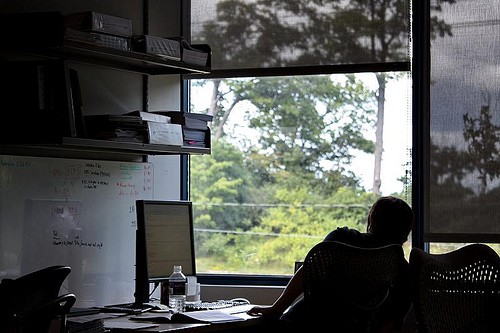
The Banjo Player
Steve Martin made the comments around twenty minutes into his 2007 interview with Charlie Rose. They were talking about how Martin learned the banjo.
“In high school, I couldn’t play an instrument,” Martin admits.
“I remember getting my first banjo, and reading the book saying ‘this is how you play the C chord,’ and I put my fingers down to play the C chord and I couldn’t tell the difference.”
“But I told myself,” he continued, “just stick with this, just keep playing, and one day you’ll have been playing for 40 years, and at this point, you’ll know how to play.”
Learning banjo is not easy, especially at a time and place (1960’s California) where banjo lessons were not a possibility. Martin’s technique was to take Earl Scruggs records and slow them down from 33 RPM to 16 RPM. He would then tune down the banjo to match the slower speed and start picking out the notes, painstakingly, one by one.
Years later, Martin began to integrate the banjo into his act.
“The reason I played [banjo] on stage,” he explained in an ABC interview, “is because…I thought it’s probably good to show the audience I can do something that looks hard, because this act looks like I’m just making it up.”
As he kept playing and practicing he got better.
In 2009, Martin released his first album, “The Crow.” It won a Grammy. (Last month he was nominated for his second Grammy.)
This was 50 years after Martin picked up his first Banjo — not far off from the 40 years he had predicted as a teenager it would take him to “know how to play.”
Martin’s Diligence
One of the things that has always impressed me about Steve Martin is his diligence. In his memoir, Born Standing Up, he emphasizes this theme — defining diligence not just in terms of persistence, but also in the ability to ignore unrelated pursuits.
Martin was, of course, being facetious when he pepped himself up with the idea that it would only take 40 years to get good at the banjo (he was playing at a high-level in his act within 5 – 10 years of starting his training), but this statement reflects a deeper truth: getting good at something is not to be taken lightly; it’s a pursuit measured in years, not weeks.

